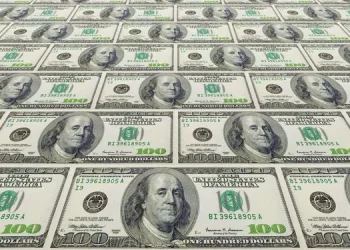Chinese policy and the decisions of leaders and governments are the focus of the investment community.
Some say that the expansion of the central bank‘s balance sheet is the last straw to rescue the financial crisis.
Especially when the financial market is in a downturn, the central bank will simply ignore the interest rate cut and launch QE to rescue the market. Do you know what “expanding the balance sheet”, “QE” means?
Learn the basics if you want to keep up with the latest news.
Because it is primarily international, it can often guide the direction of global policy.
So let’s focus on the Federal Reserve’s monetary policy.
What is a QE?
Quantitative Easing Monetary Policy, short for Quantitative, refers to a country’s financial and fiscal policies that stimulate economic growth by pumping money into the market by issuing large amounts of cash and buying government or corporate bonds.
QE generally takes the form of buying government bonds, corporate or agency bonds, buying assets, residential mortgage-backed securities (MBS), etc.
The principle is that the central bank continues to pump liquidity into the banking system and flood the market with money.
Generally, over a long period of time, the emphasis is on lowering the currency for a long time.
When will this policy be adopted?
Quantitative easing is usually the last resort of monetary policy.
In general, interest rates on a currency are zero or negative, a measure that is only taken when interest rate cuts are ineffective.
When such reports regularly appear in the market, it is also a sign that a country’s economy has really suffered a big impact.
The reason countries are very cautious about quantitative easing is that if it is carried out too far, it will lead to excess and market inflation.
There is also the possibility that QE will not work, which may not boost investment markets, but it will stimulate bond issuance and the impact of QE on investment markets.
If QE works, it will lower interest rates and boost the investment appeal of the local currency.
What’s good for stocks and what’s good for stocks?
An expansion or contraction of the balance sheet, respectively, usually through the addition or reduction of Treasury and mortgage-backed securities to adjust the liquidity of money.
A key point to understand is the balance sheet.
For the Fed, total assets are equal to total liabilities.
Expanding the balance sheet means expanding the Fed’s total assets.
How to expand assets?
Generally speaking, printing dollars, in the market will be Treasury bonds, agency bonds and so on.
So when the Fed expands its balance sheet, there will be more dollars in the corresponding market.
The expansion of the Fed’s balance sheet is good for the investment market in the short term, because the circulation of money has become better, which could ease the market’s recession fears in the short term.
However, in the medium to long term, expansion cannot directly affect changes in interest rates, so the impact on stocks and investment is difficult to measure.
Expanding the table does not equal QE.
Although balance-sheet expansion and QE look the same, they can buy Treasuries and print dollars for the market.
But this is just a routine operation to expand the table.
QE is one of three ways central banks can expand their tables. Even if they buy bonds, they often have different goals.
Expanding the balance sheet tends to buy short-term Treasury bills to increase the money supply;
QE’s goal is to lower interest rates, so it focuses on buying long-term Treasury bonds, or MBS.
As fears of the new strain continued to ease, commodities and currencies surged on U.S. and European stock markets, while oil prices soared as much as 5 percent.
Please pay attention to the specific operation, the market is changing rapidly, investment needs to be cautious, the operation strategy is for reference only.
























